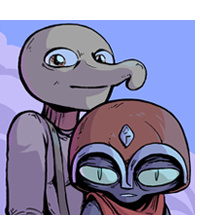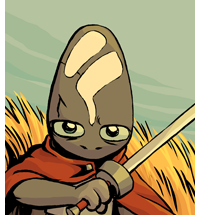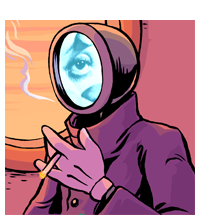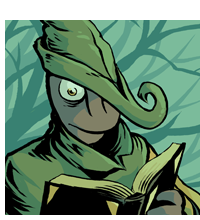Vattu Character Guide
This guide includes every named, significant character in Vattu, arranged by Kind. A series of group affiliations are listed at the end. There are spoilers for around midway through Book 3, but I’ve tried to include only loose descriptions that describe where the characters are at their entrance to the story, and their relationships to each other. Thank you for reading!
Those Marked in White
 |
Hunter of Those Marked in White. One of the two leaders of the tribe of Those Marked in White, at the time of Vattu’s birth. He is generally more pragmatic than Priestess, and leads small groups of hunters after the Torgut herds. First appears on page 3. |
 |
Priestess of Those Marked in White. The other leader of the tribe of Those Marked in White. She is in charge of the tribe’s rituals, its reverence for the god-river Ata, and its adherence to tradition. First appears on page 3. |
 |
Seri of Those Marked in White. A quiet, curious Fluter woman. First appears on page 24. |
 |
Siro of Those Marked in White. A nervous Fluter who accompanies the hunters. First appears on page 28. |
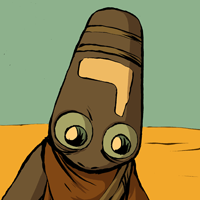 |
Tarro of Those Marked in White, later Hunter of Those Marked in White or Hunter-Once-Tarro. A Fluter who loses his name and becomes Hunter after his predecessor’s death. First appears on page 27. |
 |
Vanni of Those Marked in White, later Priest of Those Marked in White or Priest-Once-Vanni. A Fluter boy with a bad leg. Vanni is invested in the health and survival of the tribe at any cost, and his reverence for tradition is valued by Priestess. First appears on page 16. |
 |
Vattu of Those Marked in White, later Vattu Whitemark. A girl born to the tribe of Those Marked in White in a time of desperation for the tribe. Vattu is uncharacteristically brash and independent, and takes an interest in hunting. Appears as an unnamed child on page 10, marked and named on page 70. |
Sahtans
 |
Arrius Enteyer Morrant the Seventh, Mortal Hand of Tarrus and Emperor of Sahta. The present Emperor of Sahta. Arrius lives in the Imperial Tower on the Imperial Isle, separated from the body of the city by a narrow canal. He suffers from an illness that causes frequent difficulty in breathing, and which can be treated by a special kind of imported tea. He rarely makes public appearances anymore, and rarely leaves the top floors of the Tower. His father is Arrius the Sixth. His daughter is Asria Morrant. His wife is Enteyer. Appears first on page 578. Appears also in flashbacks as a child, starting on page 582. |
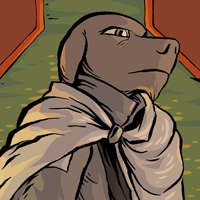 |
Arrius Morrant the Sixth, Mortal Hand of Tarrus and Emperor of Sahta. The previous Emperor of Sahta. A severe, powerful man who represents the height of Morrant ideals. His son is Arrius the Seventh. Appears only in flashbacks, starting on page 584. |
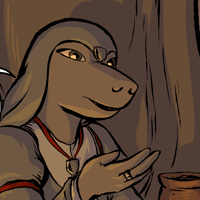 |
Asria Morrant. The daughter of Emperor Arrius Morrant the Seventh. A smart and strong-willed young woman who has been learning how to use a sword. She is named for the river that borders the city of Sahta to its West. First appears on page 356. |
 |
Borro Dorranos. Nephew of Annan Dorranos, Emperor Double-Proxy of Sahta, and of Tannan Dorranos, Sister. A wealthy friend of Velas Dagren. Borro dabbles in painting and bohemian affectation. First appears on page 311. |
 |
Calirus Sammar Torrai, Emperor Single-Proxy of Sahta. The Emperor Single-Proxy currently overseeing expansion of the Empire into the Flutelands, and who formerly oversaw its expansion into the continent of Grenth. In his current position, he directly oversees Morrian Carparia. Calirus is brutally pragmatic and aware of much of what’s going on in the Empire. His wife is Carlae Torrai. First appears on page 242. Appears in flashbacks starting on page 266, and in flashbacks as a child, starting on page 630. |
 |
Caniri Torrai. The son of Carlae Torrai and Calirus Torrai. First appears on page 965. |
 |
Carlae Sammar Torrai, Sister. The leading member of the Sisterhood. Carlae is ambitious and secretive. She seems to have plans that she doesn’t share with the rest of the Sisterhood. She is closer to Marria Tennia than the rest of them. Her husband is Calirus Torrai. First appears on page 247. |
 |
Carnin. The Reader of the court of Arrius Morrant the Seventh. Carnin is flamboyant and well-informed. He comes from a low-class Sahtan family. First appears on page 588. |
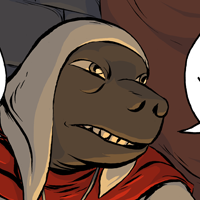 |
Dagiria of the Lantern, Sister. An official of the state Church of Tarrus, and a more conservative member of the Sisterhood than most. First appears on page 348. |
 |
Enteyer. A marginalized figure on the Imperial Isle, obsessed with old religious rites. First appears on page 780. |
 |
Iria Rennea, Sister. A member of the Sisterhood, who runs the Old-Town Mint with her husband Jero Rennea. First appears on page 346. |
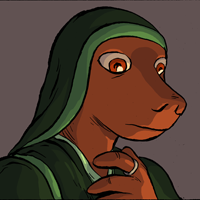 |
Marria Tennia, later Marria Tennia Carparia, Sister. A woman from the merchant family Tennia of Port’s Quarter, who weds Morrian Carparia in an arranged marriage. Marria is tentative and curious, and her involvement with the Sisterhood has led her to question much about the Empire and her marriage. First appears on page 275. |
 |
Merrus Sirvell. The personal servant of Emperor Arrius the Seventh, to whom he is intensely devoted. Merrus is responsible for the tea that saves Arrius from his coughing fits, and makes most public appearances on Arrius’ behalf. First appears on page 524. |
 |
Morrian Carparia, Emperor Double-Proxy of Sahta, later Morrian Tennia Carparia. An Emperor Double-Proxy who is involved in the expansion of Sahta into the Flutelands, under Calirus Torrai. Morrian is extremely conservative in his views on social roles, the Imperial Proxy Chain, and the other Kinds of people in Sahta. His wife is Marria Tennia. First appears on page 102. |
 |
Narri Sirvell, Sister. A member of the Sisterhood, and the mother of Merrus Sirvell. Narri was once the personal servant of Emperor Arrius the Sixth and his son, but is now estranged. She resents her son for his unquestioning loyalty to the Imperial family. First appears on page 347. Appears also in flashbacks, starting on page 583. |
 |
Talirio Surrau, Emperor Double-Proxy of Sahta. An Emperor Double-Proxy who was in charge of the expansion of Sahta into the continent of Grenth, before he was killed by the War-Man Chieftain and replaced by Calirus Torrai. Appears in a flashback on page 212. |
 |
Tanna Dorranos, Sister. A member of the Sisterhood with some knowledge of Sahta’s activity on the northern border. Her husband is Annan Dorranos, Emperor Double-Proxy. Her nephew is Borro Dorranos. First appears on page 346. |
 |
Tarria. A young beggar who befriends Arrius the Seventh in his youth, not knowing who he is. Appears in flashbacks starting on page 756. |
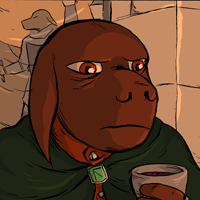 |
Tennaro Tennia. Father of Marria Tennia Carparia. Tennaro is a wealthy and well-connected merchant in Port’s Quarter. First appears on page 275, and again on page840. |
 |
Torrant, Warden of the Grenth Guard. Once a soldier who served under Calirus in Grenth, Torrant now oversees the Grenth Guard, a contingent of abducted War-Men made to fight for Sahta. First appears on page 142. |
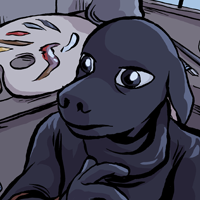 |
Velas Dagren. A young painter of low class and with no connections to any family, who was originally poor and living in Lantern Quarter. Velas is meek, thoughtful, and creative. He takes Unweight as a mind-altering drug. First appears on page 311. |
Surin of the Enclave
 |
Ilira, High Chemist of the Enclave Chapterhouse. The High Chemist in charge of interfacing with the surrounding Imperial City of Sahta. She leads the cart bearing the Enclave’s offering of Unweight to the Imperial Isle once a month. First appears on page 509. |
 |
Jinen, Separatist. A male Surin who makes toys and small machines. He runs a shop in the East Bazaar, right outside of the Enclave gates, and is unique among the Surin in that he is partially diurnal. Jinen is the only male involved with the Separatist effort. First appears on page 372. |
 |
Junti, Acolyte of the Enclave Chapterhouse. A deeply inquisitive, socially-awkward Surin girl who started her training as an Acolyte later than most because she was behind in her studies. Junti’s interests quickly extend beyond what is acceptable in mainstream Surin dogma. First appears on page 299. |
 |
Kurna, High Chemist of the Enclave Chapterhouse. One of the leading High Chemists, a domineering, conservative woman. She teaches the Acolytes the essentials of Surin Enclave Dogma, reading from the Enclave Codices. First appears on page 301. |
 |
The Weightless One. The ostensible spiritual leader of the Surin of the Enclave Chapterhouse. The Weightless One is kept in a chamber at the top of the Chapterhouse, and is totally secret from Sahta. The Weightless One has many ideas and ambitions that are out-of-line with mainstream Enclave dogma. The Weightless One is never referred to with pronouns, and is genderless. First appears on page 306. |
 |
Timin, Acolyte of the Enclave Chapterhouse. A smart, conservative Acolyte of the Chapterhouse, prone to suspicion. First appears on page 333. |
 |
Turri, High Chemist of the Enclave Chapterhouse, Separatist. A lower-level High Chemist who is involved with the Separatist effort. First appears on page 446. |
The Grish
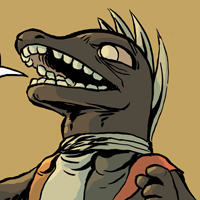 |
Diviner. A Grish holy figure who interprets the results of ritualized combat to divine the future. First appears on page 616. |
 |
Gasha the White. An enormous, volatile Grish who runs the small Unweight trade in Grishet. He has white coloration, which is exceedingly rare and is thought to represent the God of the Current, or Fate. First appears on page 554. |
 |
Kadarsh the Crimson. A wide-eyed, playful young Grish who wanders throughout the city by canal. He has some xenophobic ideas about Surin. His brother is Shezek and his father was Shakkiz. First appears on page 350. |
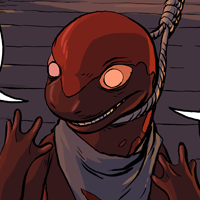 |
Shakkiz the Red. A Grish shipwright who was executed for dealing with enemies of the Empire. His sons are Kadarsh and Shezek. First appears on page 272. |
 |
Shezek the Crimson. A Grish shipwright, since his father Shakkiz was executed. Shezek also participates in ritualized Grish combat and has become involved in the Unweight trade to make ends meet. His brother is Kadarsh and his father was Shakkiz. First appears on page 595. |
Others
 |
Bakrah. A mysterious man from across the sea, who has arrived in Grishet with a lot of money, asking for a boat to be made. A former sea-captain, merchant, and grand duke. First appears on page 638. |
 |
The Chieftain of the War-Men. A powerful leader of many tribes of War-Men, who led the offensive against Sahtan invaders, and was wounded and imprisoned by them. He now serves as one of the slave-warriors of Sahta called the Grenth Guard. He has taught Vattu how to fight with a sword. First appears on page 102, and in flashbacks starting on page 126.. |
 |
The Dead. A strange nocturnal people from downriver of Those Marked in White. They first appear on page 42. |
 |
Narro. A rude, homeless Fluter. His interest in freedom and resistance is tempered by fear of the Empire. He was once Marked in Red. First appears on page 321. |
 |
Otti. An unmarked Fluter who is servant of the Carparia household. Was once Marked in Red, and lived on the coast in the Flutelands. First appears on page 207. |
 |
The War-Men. Mute warrior-creatures from Grenth. Many of them were abducted by Sahta and forced into the Grenth Guard. They first appear on page 327. |
 |
The War-Women. The war-women rarely participate in combat, and are involved in ritual activity among the War-People.They first appear on page 537. |
Organizations
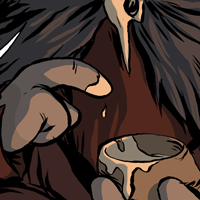 |
Those Marked in White. A small nomadic tribe of Fluters in the Flutelands, who travel annually between a few established sites to follow the animals they hunt, called Torgut. This tribe’s leadership is divided between one Hunter (usually male), and one Priest (usually female), and the understanding of society and behavior is similarly dichotomized. |
 |
The Church of Tarrus. The only officially-recognized religious institution of Sahta, headquartered in Church Quarter. The Tarrus religion in monotheistic, though Tarrus himself has six distinct aspects (conquering, righteous, distant, giving, vengeful, and mortal). The Church and the Empire are deeply intertwined, with each giving the other its power and its rationale for that power. Members of the clergy are given the suffix "of the lantern." The churches themselves are narrow white towers with lanterns at their tops. |
 |
The Court and Family of Arrius the Seventh. Emperor Arrius the Seventh is infamous for his fascination with lower-class people, and even other Kinds of people than Sahtans. His court includes several eccentric advisors, historians, and artists. His family is not as close to him as his servant, Merrus Sirvell. |
 |
The Imperial Guard. A special force of Sahtan soldiers exclusively charged with defense and policing of the Imperial Isle, and escort of members of the Court who leave it. |
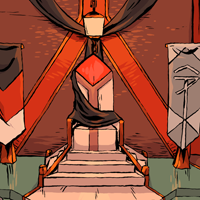 |
The Imperial Proxy Chain. Sahta understands power and righteousness as passing from the god Tarrus to the Emperor of Sahta (called in this capacity the Mortal Hand of Tarrus), and from there being successively diluted through a series of Emperors Proxy. |
 |
The Military of the Empire of Sahta. The enormous military force of Sahta, involved constantly in imperialistic efforts. |
 |
The Militia of the City of Sahta. A force charged specifically with defense and policing of the city itself. Symbols on their shields tell which area of the city they pertain to. |
 |
The Heralds. A force of Sahtans that bear flags and yellow uniforms, and move messages and small packages around Sahta. Heralds are stationed in small square booth structures throughout the city. |
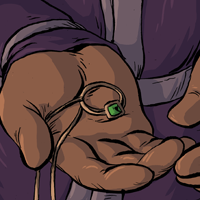 |
The Sisterhood. A semi-secret organization of aristocratic Sahtan women. Those who know of them consider them harmless gossips. |
 |
The Grenth Guard. A force of War-Men abducted from Grenth and made slave soldiers, used mostly for intimidation. |
 |
The Chieftain’s Army. An unprecedented force of War-Men on Grenth, formed of many different tribes united under the Chieftain. |
 |
The Grish Religion. Grish in Sahta hold to an ancient religion wherein six Gods (those of Blood, Land, Day, Night, Water, and Current) control the world, and their intentions can be divined by watching Grish bearing the appropriate colors in ritual combat. All Grish are naturally marked in some way that determines which God is their "patron." Grish marked in white are exceedingly rare, and the God of the Current to which this color corresponds is thought to have special significance in the fate of the Grish. |
 |
The Enclave Chapterhouse Chemistry. The dogmatic leadership of the Enclave Chapterhouse, charged with production of Unweight, sustenance of the tenuous relationship with Sahta, and the training of the next generation of girls according to the Enclave Codices. The Chemistry is all women. |
 |
The Surin Homeland. An impressive Surin civilization somewhere in the north. The High Chemists teach that the Surin in the Enclave are the last of their people left, after the Homeland was invaded and the rest of the Surin were killed. |
 |
The Enclave Separatists. A secret group of Surin interested in disrupting the repressive, exploitative relationship the Enclave has with the city of Sahta. |
|
